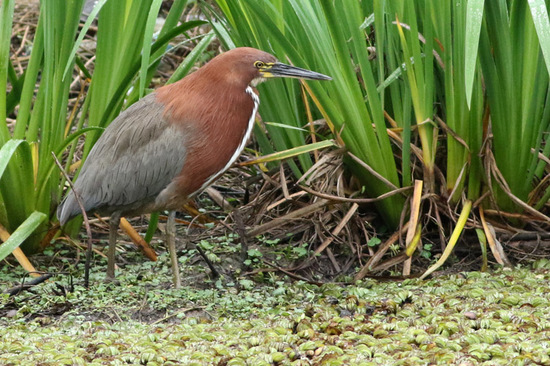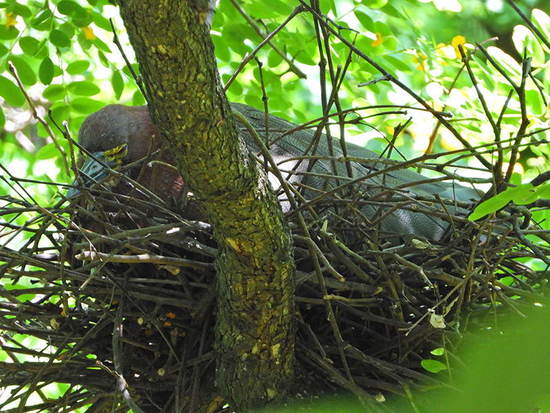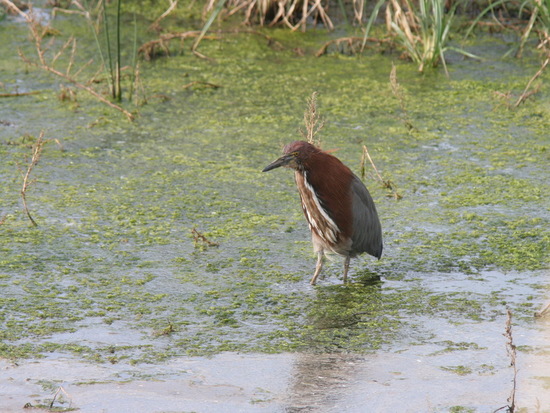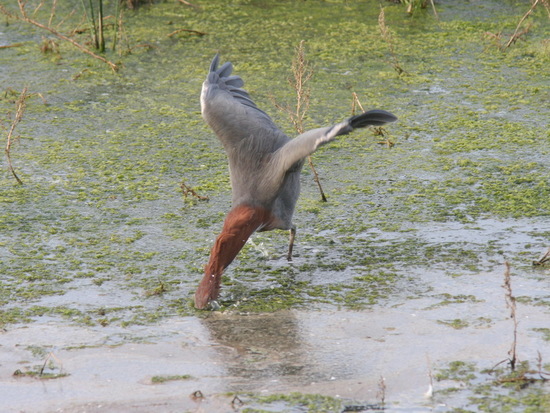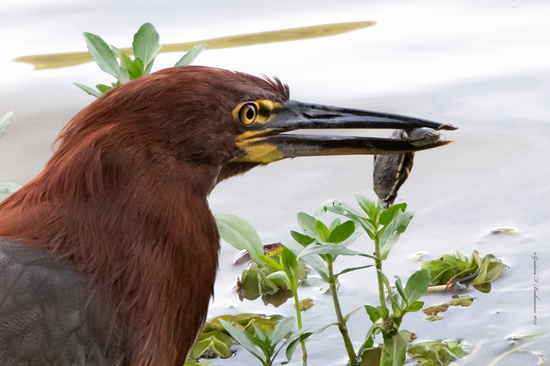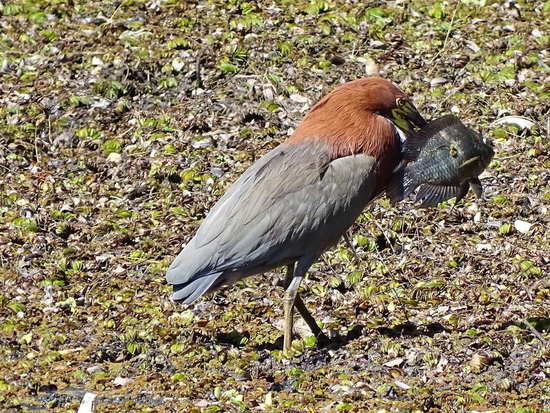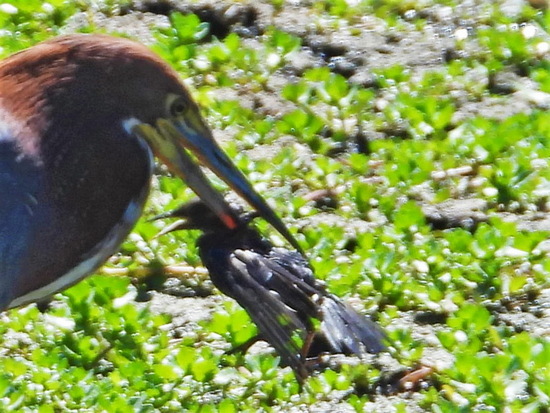Rufescent Tiger-Heron - Feeding
The rufescent tiger-heron belongs into the family commonly known as herons. A racous ho-co ho-co is his voice.
The rufescent tiger-heron is a resident bird at the reserve and lives together with other resident herons: great egret, snowy egret and cocoi heron. It is rather big, more than 60 cm tall. The long neck adopts the classical S shape of herons, though sometimes it may be hidden below its "mane". Its aspect changes radically if the neck is coiled or stretched.
The rufescent tiger-heron is a resident bird at the reserve and lives together with other resident herons: great egret, snowy egret and cocoi heron. It is rather big, more than 60 cm tall. The long neck adopts the classical S shape of herons, though sometimes it may be hidden below its "mane". Its aspect changes radically if the neck is coiled or stretched.
It is a solitary bird. It may be discovered in the grassland, where it conceals easily in the vegetation, exposed on the bank of the pond, or up in the trees, where it nests. It does not withstand human presence nearby. So, if it feels threatened it flies away.
To hunt the tiger-heron uses the stand and stalk technique. It can stay motionless for a long while waiting for the prey to come whithin reach. The typical hunting stance is with the bill in a horizontal position because the binocular field extends below and in front of the bill. So the bird can see what passes by in front of his feet. Binocular vision also guides the strike with precision. It can also be seen wading in shallow waters in search for food. It moves with long and slow strides. As it walks along it can keep the head still, an advantageous feature for this foraging technique.
01-07-06 © Roberto Ares
The specialized neck morphology allows the tiger-heron to give and withstand this lightning bill movement. The neck muscles are aligned to move the neck forward and a series of ligaments minimizes the torque through a locking mechanism. Another feature particularly developed in herons with diurnal feeding habits is that they have the ability to compensate for refraction. This effect displaces the real position of a submerged object when it is observed from above the water.
The tiger-heron captures the prey with the bill tip and paralizes it with a shake, so that it will not offer resistence. Then it moves it from the bill tip to the mouth to swallow it whole. It uses the tongue to secure it. When the prey is in the base of the bill, some muscles expand the gular region so that the prey passes through the esophagus. The tiger-heron stretches the neck to ease the prey down and if there is water available, a little sip is always welcome.
It hunts during the day and its diet is very varied: fish, eels, frogs, small mammals and birds.
05-03-13 © Amelia Besana
08-06-17 © Ernesto Gulisano
23-11-20 © Claudia y Tito Di Mauro
18-04-09 © Claudia y Tito Di Mauro


